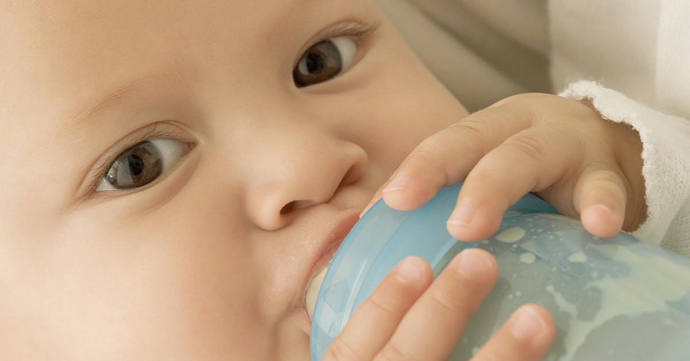

Any mother begins to worry if her baby refuses to breastfeed, begins to cry, get nervous. She may start to panic because her baby will remain hungry or even because he has some kind of health problems that mom is not aware of. What should she do when the baby does not take the breast, freaks out and cries?
When a child does not take the breast, is nervous and cries, the connection that connected him with his mother all this time is broken. Some refer to such a problem as a temporary phenomenon that quickly passes by itself, however, this approach is fundamentally wrong.
In this situation, you need to very carefully understand, look for the reason for this behavior of the baby. Of the reasons why a child does not take the mother's breast, experts distinguish the following:
1 The situation may be related to the illness of the baby. It is worth thinking about this especially when the baby ate with pleasure a few days ago, but today does not want to do this.
A common occurrence in a baby is colic. An effective and effective way to get rid of them -. The disease may include:
2 Another reason why the baby does not take the breast may be the shape of the nipples that is incorrect or uncomfortable for the baby, this can provoke feeding difficulties, but usually this problem does not appear abruptly, it is noticeable from the first days of the life of a little man.
3 Sometimes the problem may not be in the baby, but in the mother, whose nipples are blocked. It is difficult for a baby to perform the sucking process, he simply does not have the strength for this, since from the first days of his life he is forced to starve.
4 Almost always, a child refuses breast milk during the period when he begins. It is difficult for a baby to grasp the nipple with sore gums, so the feeding process becomes a real torment for him.
5 Feeding problems arise when the mother does not monitor her diet. This can cause diathesis, abdominal pain in an infant, colic, increased gas formation. Read about in a separate article.
6 The baby does not take the breast and cries when the mother has too much milk. A small person is frightened by such a flow, stops eating normally. If the mother does not have milk, then the child also has the right to a bad mood, to refuse food, since the baby does not feel full.
 With today's abundance of breast milk substitutes, the baby will not remain hungry
With today's abundance of breast milk substitutes, the baby will not remain hungry 7 Some inexperienced mothers make a very common mistake - they start teaching their child to drink from a bottle early. Then mothers can make an attempt to give the baby a nipple again, but this will end in complete failure, because when sucking milk, you have to strain, and the baby is not used to doing this.
8 When the child reaches the age of about 4 months, he begins to have problems with stools, persistent or diarrhea, the baby refuses to breastfeed. The situation needs to be controlled, but there is nothing to worry about, since the digestive system of a small person is growing, rebuilding in a new way.
9 You need to feed the baby in a comfortable environment for him.. There should be no sharp sounds, stuffiness, unpleasant odors, otherwise all this can also provoke hysteria, nervousness, refusal to eat. It tells about what temperature should be in the newborn's room and how to maintain it.
10 Sometimes it may not even be in the digestive system, but in the fact that the baby has a lot of diaper rash and redness on the body, which are not properly cared for, so touching while feeding can hurt him.
As can be seen from the listed reasons, there are many reasons to refuse mother's milk in crumbs, so you should immediately consult a doctor about what to do in a given situation.
There is no need to wait, as such waiting can be too expensive, because mother's milk is vital for the baby.
First of all, you need to tune in to get the situation back on track, you will have to try very hard. A mother can only do what depends on her, namely, to create a favorable atmosphere for feeding the baby.
To do this, you need to curtain the windows, make sure that no curious relatives are present in the room during feeding, turn on quiet, pleasant music, and pre-ventilate the room.
In addition, you need to learn how to make it convenient for him to eat, the baby refuses breast milk due to an uncomfortable posture as well.
When the above measure does not help, then it is time to move on to more decisive action if the child refuses to breastfeed:
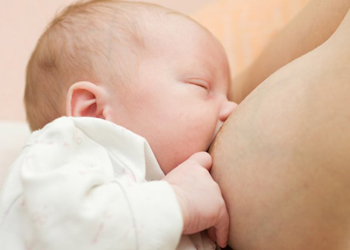 The child will not refuse to suck on the breast before going to bed and half asleep, even if he had previously refused
The child will not refuse to suck on the breast before going to bed and half asleep, even if he had previously refused In order to avoid these errors, you need to read them carefully.
The biggest mistake mothers make is that they offer the baby a second breast as soon as he spits out the first. It is not worth doing this, since the baby himself must make efforts in order to suck out the "hind" milk.
 Mom needs to gently hold the baby's head so that he does not turn it, and patiently apply it to the chest
Mom needs to gently hold the baby's head so that he does not turn it, and patiently apply it to the chest In terms of its composition, this milk is more fatty and healthy than the “front” milk, so it is more difficult to extract it. And if the child eats from both breasts only “forward” milk, then this will lead to the fact that he will not eat up, he will constantly scream, freak out.
Most often, the baby spits out the nipple when he has already eaten, so it is worth waiting for the moment when he is really hungry and making sure that he finishes the milk from one breast to the end. If he expresses a desire to eat more, then only then can he be offered a second one.
When the baby is very active, constantly turns his head, cannot hold the nipple, then you do not need to let this matter take its course, give milk to the baby by force. You just need to hold his head to make it easier for the baby.
A common mistake mothers make is feeding their babies on schedule., which the baby is not always ready to obey. If the baby is tired, wants to sleep, and the mother urgently wants to feed him, then this will definitely cause the baby to become hysterical with crying and nerves, but you just need to carefully look at the baby’s behavior, if he yawns, rubs his eyes, then it’s better to put him to bed, and calmly feed later.
Some young inexperienced mothers should look at reviews on what to do if the baby does not take the breast, which in this case their more experienced predecessors do. Perhaps some facts will be able to calm them down, and some will tell you how to behave correctly.
The baby refuses to breastfeed and cries - such a problem can occur even in the absence of any apparent reason for this. Let's try to figure out why this can happen and, most importantly, how to find a way out of this situation, because the lactation period is very important both for a newborn baby and for the health of his mother.
infant crying and refusing to breastfeed? Learn how to solve the problemIf a baby refuses breast milk, it may look different. Of course, a mother who spends day and night next to her baby will see warning signs:
To say that the baby is naughty is not entirely true. If at this age the baby roars and does not recognize breastfeeding, then there are objective reasons for that. Either he is sick or he is not comfortable. It is inappropriate to talk about the so-called manifestation of character here. The sooner we determine the cause, the more successfully we will solve the problem.
 First of all, you need to find out the reasons for the anxiety of the baby.
First of all, you need to find out the reasons for the anxiety of the baby. A child's refusal to breastfeed can happen due to the fact that the mother's breast has individual anatomical features that make the process difficult. This may be too flat or, conversely, an elongated shape of the nipples, as well as too narrow channels through which milk flows.
What is created by nature is difficult, and sometimes impossible to change, so you need to try to adapt to the non-standard features of your body and help the baby do it. It is necessary to develop the chest, massage and express milk with the help. Such regular activities will support lactation and help the baby. You can use special pads for feeding, which are sold at the pharmacy. The main thing is to tackle the problem right away, because at first the baby is still very weak. After the first month, when he grows a little and gets stronger, he will cope with tight breasts on his own.
The well-known pediatrician E. Komarovsky advises in such situations to be patient and take action. After interrupting feeding for a few minutes, you need to massage the breast, and then attach the baby to it again. The main thing is to do it regularly.
Why does the child refuse the breast after he took it for a while without problems? Often this happens if the baby is sick. This must be taken very seriously, since the protracted nature of the disease not only adversely affects overall health and slows down the recovery process, but can also lead to the child's refusal to breastfeed.
 A possible reason for the refusal of a child to breastfeed is problems with the tummy
A possible reason for the refusal of a child to breastfeed is problems with the tummy What diseases and painful conditions should be kept in mind:
If the first signs of any ailment are found, it is imperative to take action as soon as possible. This will preserve lactation and help avoid complications.
There are a number of other reasons why a baby may refuse to breastfeed. Eliminating them is easier, since they are all associated with non-compliance with elementary rules. Most often it is:
As you can see, all the problems in this category are not so difficult. Having correctly determined the cause, it can be eliminated simply and quickly.
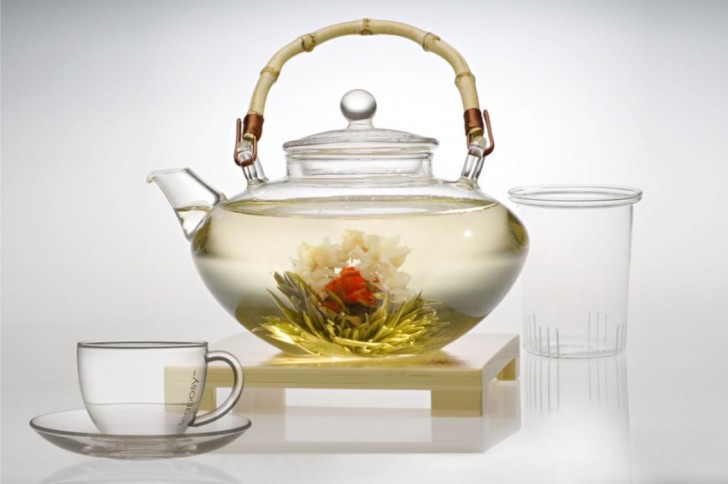 Try drinking tea to restore lactation
Try drinking tea to restore lactation The so-called lactation crisis is actually a false rejection of the breast. With this crisis breastfeeding can be encountered when the child is already 3-4 months old. At this time, the baby begins to show individual character traits. Naturally, he does it in his own way: he can scream and resist, turning away from his chest, cry, that is, refuse food in all available ways.
Such a lactation crisis should not be a reason to switch from breastfeeding to a bottle. This is a kind of psychological moment, and not a problem with digestion. Mom needs to be patient and continue to breastfeed the baby, do not stop night feedings, do not give nipples and pacifiers, as well as water and complementary foods.
It is equally important that the mother is constantly next to the child - constant contact will help strengthen the spiritual connection between them. Period lactation crisis passes quite quickly, and soon the baby will be happy to breastfeed again.
The main danger of false breastfeeding is that it can become real. Such a risk exists when the mother was not immediately able to understand what was the matter, or if the rules of feeding were violated from the very beginning. The physical malaise of the child can also aggravate the problem.
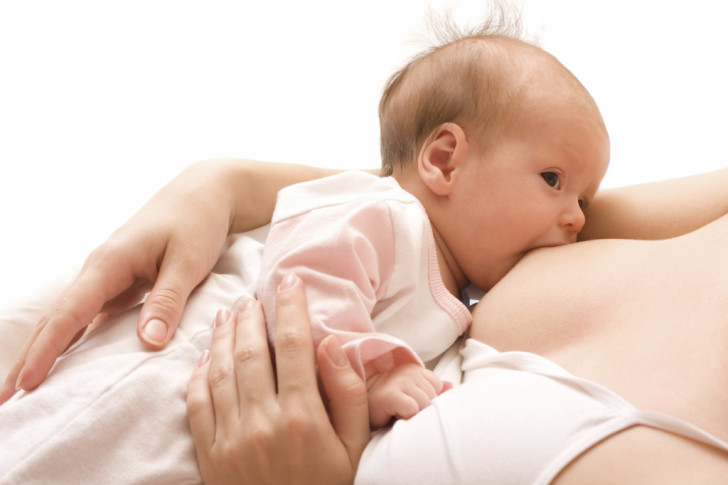 Always be calm, this will strengthen your bond with your child.
Always be calm, this will strengthen your bond with your child. To overcome the lactation crisis, the psychological factor is very important. Establishing contact between mother and baby is the basis for solving the problem. Some tricks will help with this:
Subject to all the rules, you can quickly and relatively easily solve the problem and teach the baby to the breast again. Lactation will not be disturbed, and the child will develop a sense of security and confidence.
Breast milk is the ideal food for a newborn. It not only saturates the baby, helping him grow and develop, but also protects, supports the immune system, and enriches the small body with such essential vitamins. But there are situations when the baby refuses breast milk. Why this happens, and how to act mom - let's try to figure it out.
Refusal of breast milk can be expressed in different ways. For example, a baby may refuse only one breast or both. Can eat only at night or during sleep, and at other times refuse. Or he starts to get nervous when mom tries to offer him a breast: she cries, turns away, arches. The reasons for this behavior can be different - from physical ailment to psychological discomfort.
It is also worth mentioning that there are certain age periods when babies quite often refuse their mother's milk. This can happen in the first days of life, at the age of 3-4 months, or after 8-12 months.
In an ideal scenario, the baby first tastes mother's milk while still in the hospital. After natural childbirth, which took place without complications, the baby tries colostrum from the mother's breast while still in the delivery room. He feeds on it for the next two or three days until the mother has milk. But there are situations (for example, with complicated childbirth or caesarean section), when the mother cannot immediately feed the baby herself. Then he gets his first food from the bottle. When the mother later tries to offer him a breast, the child does not want to take it. This refusal of breast milk in favor of a bottle is easy to explain. Firstly, the bottle is already familiar to the baby, and mother's breast is something new and incomprehensible. Secondly, it is easier to eat formula from a bottle, and in order to get food from the breast, you need to try harder, put more effort, the taste of the mixture is already familiar, but milk is not. Such a refusal is easily overcome, you just need to exclude the bottle and offer breasts. In a day or two, the baby will get used to it. It is not very good to accustom a child to a pacifier from the very first days of life - this can also provoke him to refuse breast milk.
Sometimes the shape of the nipple (too small or too large) can be the reason for refusal in the first days of life. But these are really only temporary difficulties. The main thing is to learn how to properly attach the baby to the chest, and over time he will get used to it and will eat well.
It happens that the baby refuses to breastfeed because of the appearance of unfamiliar smells (mother used perfume, body cream, deodorant or a new fabric softener). It is better to refrain from such innovations, choose neutral hygiene products for personal care (odorless).
Often, especially at the beginning of breastfeeding, the baby may refuse to breastfeed due to a strong flow of milk when there is too much of it. Hyperlactation can cause the breasts to become too tight, making it difficult for the baby to suckle. The main thing here is not to panic and patiently continue breastfeeding, after massaging the breast a little and expressing a little milk. Over time, when lactation improves and becomes more mature, the baby will calmly eat and completely eat up mother's milk.
Sometimes a baby may refuse to breastfeed because the mother feeds him in a different, unusual position for him. For example, if in the hospital he is used to breastfeeding, lying next to his mother, and at home she sits on the sofa and takes him in her arms to feed him. Or the child is reluctant to take one breast. For example, he eats from the right, but refuses from the left. Habit can also be an explanation for this situation. Previously, the mother gave more to the right breast, or only her, because there was a crack or lactostasis (milk stasis) on the left, or it seemed to the mother that there was always less milk in the left breast. Therefore, one breast was "out of favor" with the crumbs.
The refusal of a child to breastfeed at 3-4 months most often has a psychological basis. By this age, the baby becomes more emotional, receptive to the conditions in which he lives, and may respond to discomfort or any changes in care and feeding by refusing to breastfeed.
The child is already interested in the outside world with might and main: he wants to understand where an unfamiliar sound comes from, seeks to examine unfamiliar bright objects, so he is often distracted during feeding, which can be perceived by his mother as a refusal. Actually this is not true. If the baby has let go of the breast, try offering it again in a few minutes: if the little one does not cry, does not arch, but continues to eat, then he has already considered everything and is ready to suck further.
Modern mothers often seek to use various early development methods for their child. Dynamic gymnastics, yoga for babies, professional massage, early hardening or baby swimming are quite stressful for a child who is adapting to a new life. This can lead to breast rejection.
At this age, the child may also react negatively to changes in the conditions or circumstances of his family's life. For example, if strangers (friends, neighbors, relatives) appear in the house, or the child often visits with his parents (a new, strange place, unknown people) or crowded places, if the mother began to leave for a long time (went to work or left) . All this can also become a source of discomfort and stress for a small child, and as a result, he may refuse to breastfeed. The youngest children feel good and confident in the familiar environment and in the events that repeat daily.
If we are talking about older children, for example, from seven to eight months to a year, then they most often lose interest in mother's milk due to improperly organized complementary foods. Often mothers try to give their child more “adult” food, to replace more feedings with it. The child likes new tastes, he fills up - and the need for milk decreases. Many mothers perceive this refusal of breast milk as physiological weaning (that is, the child meaningfully refuses milk as an unnecessary product). Actually this is not true. According to breastfeeding consultants, it is physiological, that is, it is natural to feed a child up to 2-3 years old, because even after a year in mother's milk there are still a lot of useful and necessary substances for the baby. And the child refuses the breast for a different reason, and not because it has become useless. For example, because complementary foods replace mother's milk.
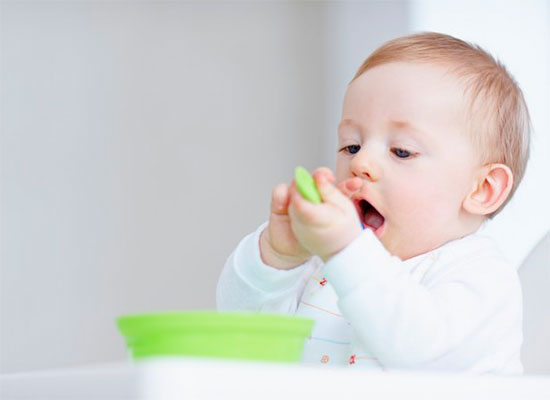
It is worth mentioning another very important reason for refusing breast milk, which occurs at any age. This is poor health or even a crumb illness. Perhaps the baby is cutting through another tooth or has a sore throat, and it hurts and is unpleasant for him to swallow milk. The child may have a stuffy nose, and it is difficult for him to eat and breathe at the same time. Stomatitis (thrush) or high fever can also discourage taking mother's breast.
It happens, albeit infrequently, that a child refuses to breastfeed, feeling the changed taste of mother's milk. Milk becomes bitter during menstruation or during repeated pregnancy. And for this reason, the child sometimes loses the desire to suckle the breast. This phenomenon is temporary, and soon the baby will get used to the new taste. It must be said that mother's milk has a different taste every day. It depends on the mother's diet. Therefore, babies quickly get used to the new taste of mother's milk.
If the baby refuses to breastfeed, the mother should not panic, because this will further disturb the child, who feels the mood of the mother. After calming down, try to identify the reason for the rejection of breast milk and eliminate it.
Try to choose a feeding position that is comfortable for both of you. If there is too much milk, and it is difficult for the child to eat, express a little before feeding.
If the child does not feel well, consult a doctor to determine the cause of the ailment and cure it.
During the period when the baby refuses food, you should try to remove all possible reasons psychological discomfort. They were mentioned earlier. At this time, only mom needs to take care of the baby - this will calm him down.
Often, children who refuse to breastfeed still take it in a half-asleep state. You can try to shake the baby in your arms and try to put a nipple in his mouth when he starts to fall asleep. You may have to organize a joint night's sleep for a while.
To feed the baby during the day when he is awake, you can resort to the help of "white noise". Turn on the hair dryer, extractor hood or vacuum cleaner - their noise will remind the baby of the period when he was in his mother's tummy, this is how the fetus heard all external sounds. Sometimes it helps the child to calm down and eat.
The question arises of what to do with milk during the period of refusal: the baby does not want to eat as before, but the milk arrives. If there is a lot of milk, you can express a little. A light massage or a warm shower will help alleviate the condition.
But the most important thing in the period of refusal is to try to keep breastfeeding. This will require patience, a little effort and, of course, time. In no case do not immediately run for a saving bottle of formula. If the child misses several feedings, he will not suffer much, later he will eat with great appetite. Be patient, act according to the situation, and you will definitely overcome rejection.
Especially for -Ksenia Boyko
In our difficult age of stress, women often experience problems with lactation, so many mothers cannot feed their baby only with breast milk, they have to start supplementing early. In such a situation, pediatricians recommend introducing an adapted dairy product into the diet. Why a child refuses a bottle of formula and how to solve this problem, the employees of the Daughters-Sonny online store will tell.
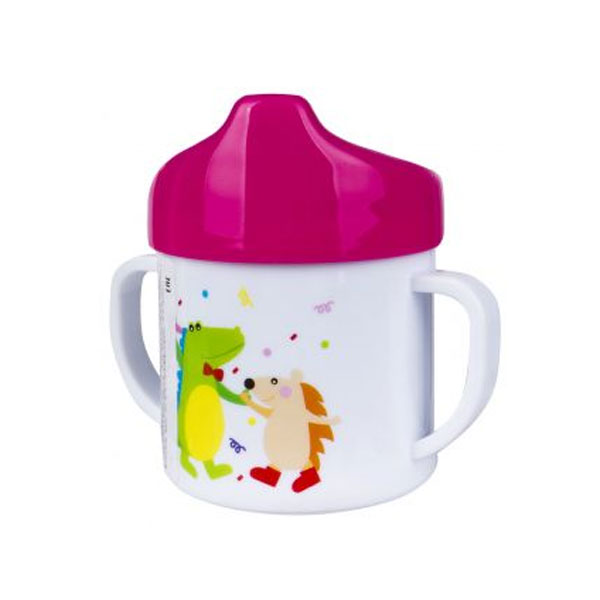
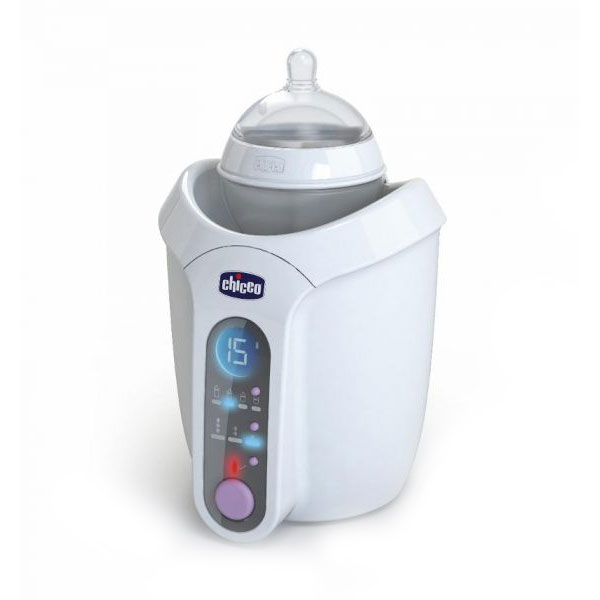
Until 6-8 months, there is no alternative to artificial nutrition. Therefore, the refusal of the baby from the bottle puts parents in a very difficult situation, a way out of which must be found as soon as possible.
A newborn may not accept artificial food for several reasons: he is uncomfortable lying, he is not satisfied with the product itself, the infant does not like the nipple for feeding, or he simply does not want to eat. If increasing the intervals between feedings and changing the position of the baby's body do not help, then the reasons lie in the following:
A common reason for refusing a bottle of food, pediatricians say is the difficult transition from the usual nipple of the mother's breast to the nipple. If it has a straight standard shape and a wide opening, the baby may choke. It always causes crying and rejection of the new product. To get out of this situation, you need to change the nipple, and if the problem continues, then you need to change the mixture. pick up baby food followed by consultation with a pediatrician.
| Ways | Recommendations | Indications | Products |
|---|---|---|---|
| Changing the mixture | Adapted, hypoallergenic, palm oil free. | The composition is as close as possible to breast milk. Adapted products normalize digestion. | Nutrilak Premium, Similac Premium, Humana AR |
| bottle selection | With an orthodontic teat with a medium hole size (M). | An orthodontic nipple is shaped like a mother's nipple to a baby. It is convenient and easy to suck out liquid from it. | Nuk Classic, Bibi Little Stars |
| Replacing a bottle with a sippy | With two handles, sealed with a tight lid with a hard spout. | For children from six months. When moving from bottle to baby cups. | Canpol patterned training, Born Free |
| Buying a heater | Electric, with electronic display and automation. | You can heat the food to a comfortable temperature for the baby. The device remembers favorite modes. | Chicco, Dr. Brown's |
With the help of modern bottle warmers, parents bring food to the optimum temperature (36-37°C). After warming up to such indicators, the children agree to drink milk mixtures.
Parents whose children refused the usual artificial nutrition, switched to hypoallergenic formulations from Hipp, Similac, Humana and Nutrilon Premium. These products have a taste as close as possible to mother's milk, so the baby ate the entire portion with pleasure.
If the baby refused food through colic, then the prebiotics that are part of these infant formulas helped to eliminate intestinal spasms. In addition, hypoallergenic products normalize the intestinal microflora and improve appetite.
“For problems that arise when feeding is refused, the search for a solution should begin with changing the nipple or milk formula. If the food itself is in doubt, consult your pediatrician and buy another product. If after changing two types of food the child continues to act up, pick up a bottle with an orthodontic nipple or a drinking cup with a hard spout.
Specialist of the online store "Daughters-sons"
Antonova Ekaterina
The child stops eating when he does not like the offered milk formula at all or the shape and size of the nipple does not fit. Pediatricians recommend changing the type of food or bottle. You should also pay attention to the temperature of the prepared mixture. For heating, you can purchase a high-precision heater.